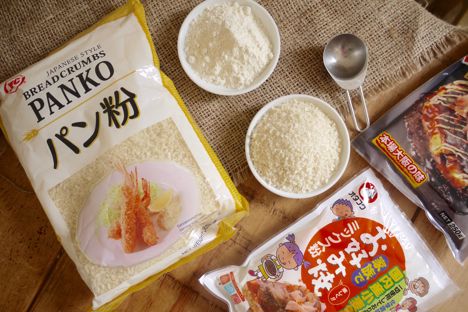
Flavours of Japan: flour and panko
Kate Doran offers valuable insight to the many uses of Japanese flours and panko breadcrumbs.
Flavours of Japan: flour and panko
Kate Doran offers valuable insight to the many uses of Japanese flours and panko breadcrumbs.
Flour probably isn’t the first ingredient you’d associate with Japanese cuisine, but it’s a vital component of many of the country’s most famous exports. Flaky panko breadcrumbs – crispier and more delicate than the regular sort – are used to coat chicken for katsu curry, katakuriko (a starchy vegetable flour) is used for feather light tempura and seasoned okonomiyaki flour is used to make pancakes of the same name.
Panko breadcrumbs are made using white bread – traditionally the soft and airy Japanese milk bread or Hokkaido, which was developed in the twentieth century using a Chinese starter method called ‘tangzhong’. The crusts are removed and the bread processed into flakes rather than crumbs, giving it its unique texture. Beyond Japanese cooking, Western chefs and home cooks are embracing panko to make everything from crumbed fish and chicken to toppings for casseroles and macaroni cheese.
Many Japanese flours are naturally gluten-free, making them a great addition to the allergy-friendly store cupboard. The aforementioned katakuriko is made from potatoes and can be used as a wheat flour substitute to thicken soups and sauces or for batter when deep-frying. Kinako, a toasted soy bean flour, has a delicious peanut flavour and can be used for dusting desserts, sprinkled over ice cream or stirred into yoghurt. Rice flour is often used in conjunction with other flours in gluten-free flour mixes for baked goods and sweet rice flour made from short grain or glutinous rice acts as a brilliant binder in recipes for mochi and noodles.
From savoury pancakes to sticky sweet mochi, Japanese flours can be used in so much more than simply bread and baking. Whether you’re looking to perfect your chicken katsu curry or hoping to create a gluten free showstopper for dessert, the Japanese store cupboard is the perfect source of inspiration.

